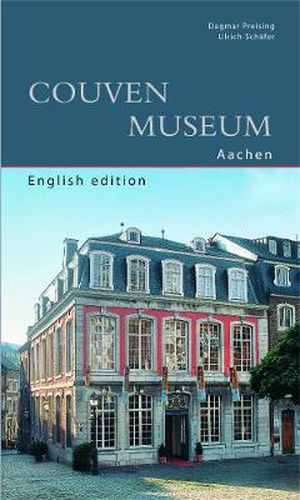Readings Newsletter
Become a Readings Member to make your shopping experience even easier.
Sign in or sign up for free!
You’re not far away from qualifying for FREE standard shipping within Australia
You’ve qualified for FREE standard shipping within Australia
The cart is loading…






The Couven Museum is situated in the heart of Aachen on the site of Charlemagne’s imperial palace. Complete interiors dating back to the 18th and early 19th centuries are presented in a baroque building that houses the former Adler Apotheke, as well as a ceremonial hall, various parlours, intimate rooms and a kitchen that portrays the servants’ activities.
Apart from furniture, the exhibits include paintings and painted wall coverings, stoves, fireplaces and matching accessories, grandfather and pendulum clocks, chandeliers and candle sticks, windows and doors, as well as porcelain vessels exhibited in glazed dressers. Originally, all these exquisite works used to demonstrate the social status of the well-to-do citizens that acquired them. Eighteenth-century Aachen furniture is made of oak and solely decorated with carvings. The museum also presents two dressers from neighbouring Liege, thus making comparison possible and underscoring the particularities of Aachen furniture.
$9.00 standard shipping within Australia
FREE standard shipping within Australia for orders over $100.00
Express & International shipping calculated at checkout
The Couven Museum is situated in the heart of Aachen on the site of Charlemagne’s imperial palace. Complete interiors dating back to the 18th and early 19th centuries are presented in a baroque building that houses the former Adler Apotheke, as well as a ceremonial hall, various parlours, intimate rooms and a kitchen that portrays the servants’ activities.
Apart from furniture, the exhibits include paintings and painted wall coverings, stoves, fireplaces and matching accessories, grandfather and pendulum clocks, chandeliers and candle sticks, windows and doors, as well as porcelain vessels exhibited in glazed dressers. Originally, all these exquisite works used to demonstrate the social status of the well-to-do citizens that acquired them. Eighteenth-century Aachen furniture is made of oak and solely decorated with carvings. The museum also presents two dressers from neighbouring Liege, thus making comparison possible and underscoring the particularities of Aachen furniture.